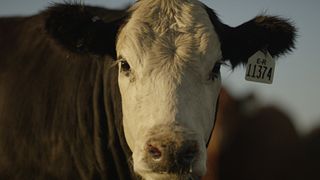Beef Choices

We're all very fortunate to be able to have countless options when we enter a grocery store. Now, with different classifications of beef, it can all get a bit confusing. Here, we aim to answer all your questions!
All Cattle Eat Grass
Grain-finished or “conventional” beef typically means …
- Cattle spend most of their lives eating grass or forages, finishing with 4 to 6 months in a feedyard.
- At the feedyard, cattle are fed a scientifically- balanced diet of grains, such as corn, wheat or soybeans and other local feedstuffs, like potato hulls or sugar beets and hay or forages.
- If needed, cattle may be given FDA-approved antibiotics including ionophores (antibiotics not medically important to humans).
- Cattle may be given FDA-approved growth-promoting hormones.
- Cattle may be given vitamin and mineral supplements.
Grass-finished or “grass-fed” beef typically means …
- Cattle eat grass or forage throughout its lifetime (other than prior to weaning).
- Cattle may be fed grass or forage in a feedyard setting. It can also be fed hay or silage (fermented green forage crops), such as corn silage (which averages 10-20 percent grain).
- If needed, cattle may be given FDA-approved antibiotics including ionophores (antibiotics not medically important to humans).
- Cattle may be given FDA-approved growth-promoting hormones.
- Cattle may be given vitamin and mineral supplements.
Naturally raised or “never-ever” beef typically means …
- Cattle can be grain-finished or grass-finished.
- Cattle may be finished in a feedyard setting.
- Cattle have never received any antibiotics, including ionophores (antibiotics not medically important to humans).
- Cattle have never received growth-promoting hormones.
- Cattle may be given vitamin and mineral supplements.
Raised without antibiotics typically means…
- Cattle can be grain-finished or grass-finished.
- Cattle may be finished in a feedyard setting.
- Cattle have never received any antibiotics, including ionophores (antibiotics not medically important to humans).
- Cattle can receive growth-promoting hormones.
- Cattle may be given vitamin and mineral supplements.
Raised without hormones typically means…
- Cattle can be grain-finished or grass-finished.
- Cattle may be finished in a feedyard setting.
- If needed, cattle may be given FDA-approved antibiotics including ionophores (antibiotics not medically important to humans).
- Cattle have never received growth-promoting hormones.
- Cattle may be given vitamin and mineral supplements.
Certified organic beef means that…
- Cattle can be grain-finished or grass-finished, as long as the feed is certified by the USDA’s Agriculture Marketing Service as 100 percent organically grown.
- Cattle may be finished in a feedyard setting, but animals must be provided access to the outdoors and must be certified organic by the USDA’s Agricultural Marketing Service (all processors of organic meat must be certified by the USDA’s Agricultural Marketing Service).
- Cattle have never received any antibiotics, including ionophores (antibiotics not medically important to humans.
- Cattle have never received growth-promoting hormones.
- Cattle may be given vitamin and mineral supplements.
This does not represent every label a consumer may see. Each label must be approved by USDA through a formal submission and evaluation process.
All labels with special claims, including animal-raising claims, need to be submitted to FSIS prior to being used on the product. For most animal-raising claims, the documentation typically needed to support these claims includes:
1. A detailed written description explaining the controls used for ensuring that the raising claim is valid from birth to harvest or the period of raising being referenced by the claim;
2. A signed and dated document describing how the animals are raised (e.g., vegetarian-fed, raised without antibiotics, grass- fed), to support that the specific claim made is truthful and not misleading;
3. A written description of the product-tracing and segregation mechanism from time of slaughter or further processing through packaging and wholesale or retail distribution;
4. A written description for the identification, control, and segregation of non- conforming animals or products; and
5. If a third party certifies a claim, a current copy of the certificate.
For the USDA-FSIS guidance, see the Federal Register at: https://s3.amazonaws.com/public-inspection.federalregister.gov/2016-24067.
For more information on guidelines on documentation needed to substantiate animal raising claims for label submission, see: http://www.fsis.usda.gov/wps/wcm/connect/6fe3cd56-6809-4239-b7a2-bccb82a30588/RaisingClaims.pdf?MOD=AJPERES.
Share This Page